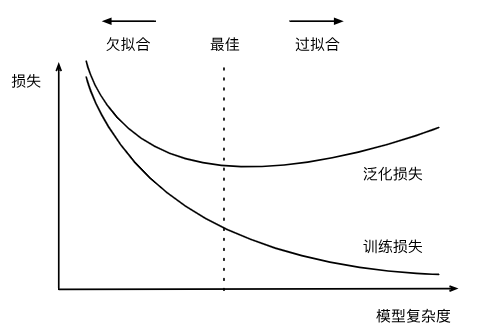
《动手学深度学习(PyTorch版)》笔记5
注:书中对代码的讲解并不详细,本文对很多细节做了详细注释。另外,书上的源代码是在Jupyter Notebook上运行的,较为分散,本文将代码集中起来,并加以完善,全部用vscode在python 3.9.18下测试通过,同时对于书上部分章节也做了整合。
注:书中对代码的讲解并不详细,本文对很多细节做了详细注释。另外,书上的源代码是在Jupyter Notebook上运行的,较为分散,本文将代码集中起来,并加以完善,全部用vscode在python 3.9.18下测试通过,同时对于书上部分章节也做了整合。
Chapter5 Deep Learning Computation
5.1 Layers and Blocks
import torch
from torch import nn
from torch.nn import functional as F
net = nn.Sequential(nn.Linear(20, 256), nn.ReLU(), nn.Linear(256, 10))
X = torch.rand(2, 20)#2行20列的张量,值为[0,1)内的随机数
#print(net(X))
#自定义块
class MLP(nn.Module):
# 用模型参数声明层,这里声明两个全连接层
def __init__(self):
# 调用MLP的父类Module的构造函数来执行必要的初始化。
# 这样,在类实例化时也可以指定其他函数参数,例如模型参数params(稍后将介绍)
super().__init__()
self.hidden = nn.Linear(20, 256) # 隐藏层
self.out = nn.Linear(256, 10) # 输出层
# 定义模型的前向传播,即如何根据输入X返回所需的模型输出
def forward(self, X):
# 这里使用ReLU的函数版本,其在nn.functional模块中定义。
return self.out(F.relu(self.hidden(X)))
net = MLP()
print(net(X))
#自定义顺序块
class MySequential(nn.Module):
def __init__(self, *args):
super().__init__()
for idx, module in enumerate(args):
#module是Module子类的一个实例,保存在'Module'类的成员变量_modules中。_module的类型是OrderedDict
self._modules[str(idx)] = module
def forward(self, X):
# OrderedDict保证了按照成员添加的顺序遍历它们
for block in self._modules.values():
X = block(X)
return X
net = MySequential(nn.Linear(20, 256), nn.ReLU(), nn.Linear(256, 10))
print(net(X))
#自定义权重为常数的隐藏层
class FixedHiddenMLP(nn.Module):
def __init__(self):
super().__init__()
# 不计算梯度的随机权重参数。因此其在训练期间保持不变
self.rand_weight = torch.rand((20, 20), requires_grad=False)
self.linear = nn.Linear(20, 20)
def forward(self, X):
X = self.linear(X)
# 使用创建的常量参数以及relu和mm函数
X = F.relu(torch.mm(X, self.rand_weight) + 1)
# 复用全连接层。这相当于两个全连接层共享参数
X = self.linear(X)
# 下面代码演示如何把代码集成到网络计算流程中
while X.abs().sum() > 1:
X /= 2
return X.sum()
net = FixedHiddenMLP()
print(net(X))
#嵌套块
class NestMLP(nn.Module):
def __init__(self):
super().__init__()
self.net = nn.Sequential(nn.Linear(20, 64), nn.ReLU(),
nn.Linear(64, 32), nn.ReLU())
self.linear = nn.Linear(32, 16)
def forward(self, X):
return self.linear(self.net(X))
chimera = nn.Sequential(NestMLP(), nn.Linear(16, 20), FixedHiddenMLP())
print(chimera(X))
5.2 Parameter Management
import torch
from torch import nn
net = nn.Sequential(nn.Linear(4, 8), nn.ReLU(), nn.Linear(8, 1))
X = torch.rand(size=(2, 4))
#print(net(X))
#查看第二个全连接层的参数
print(net[2].state_dict())
print(type(net[2].bias))
print(net[2].bias)
print(net[2].bias.data)
print(net.state_dict()['2.bias'].data)#此行作用和上行相同
#访问第一个全连接层的参数和访问所有层
print(*[(name, param.shape) for name, param in net[0].named_parameters()])
print(*[(name, param.shape) for name, param in net.named_parameters()])
#由于没有在nn.Sequential中明确指定ReLU层的权重和偏置,因此它们在输出中没有被显示
#从嵌套块收集参数
def block1():
return nn.Sequential(nn.Linear(4, 8), nn.ReLU(),
nn.Linear(8, 4), nn.ReLU())
def block2():
net = nn.Sequential()
for i in range(4):
# 在这里嵌套
net.add_module(f'block {i}', block1())
return net
rgnet = nn.Sequential(block2(), nn.Linear(4, 1))
print(rgnet(X))
print(rgnet)
print(rgnet[0][1][0].bias.data)
#用内置函数进行参数初始化
def init_normal(m):
if type(m) == nn.Linear:
nn.init.normal_(m.weight, mean=0, std=0.01)
nn.init.zeros_(m.bias)
net.apply(init_normal)
print(net[0].weight.data[0], net[0].bias.data[0])
def init_constant(m):
if type(m) == nn.Linear:
nn.init.constant_(m.weight, 1)#初始化参数为常数1
nn.init.zeros_(m.bias)
net.apply(init_constant)
print(net[0].weight.data[0], net[0].bias.data[0])
def init_xavier(m):
if type(m) == nn.Linear:
nn.init.xavier_uniform_(m.weight)
def init_42(m):
if type(m) == nn.Linear:
nn.init.constant_(m.weight, 42)
net[0].apply(init_xavier)
net[2].apply(init_42)
print(net[0].weight.data[0])
print(net[2].weight.data)##只有一层
在下面的例子中,我们使用以下的分布为任意权重参数
w
w
w定义初始化方法:
w
∼
{
U
(
5
,
10
)
possibility=
1
4
0
possibility=
1
2
U
(
−
10
,
−
5
)
possibility=
1
4
\begin{aligned} w \sim \begin{cases} U(5, 10) & \text{ possibility=} \frac{1}{4} \\ 0 & \text{ possibility=} \frac{1}{2} \\ U(-10, -5) & \text{ possibility=} \frac{1}{4} \end{cases} \end{aligned}
w∼⎩
⎨
⎧U(5,10)0U(−10,−5) possibility=41 possibility=21 possibility=41
def my_init(m):
if type(m) == nn.Linear:
print("Init", *[(name, param.shape)
for name, param in m.named_parameters()][0])
nn.init.uniform_(m.weight, -10, 10)
m.weight.data *= m.weight.data.abs() >= 5
net.apply(my_init)
print(net[0].weight[:2])
net[0].weight.data[:] += 1
net[0].weight.data[0, 0] = 42
print(net[0].weight.data[0])
#参数绑定
#我们需要给共享层一个名称,以便可以引用它的参数
shared = nn.Linear(8, 8)
net = nn.Sequential(nn.Linear(4, 8), nn.ReLU(),
shared, nn.ReLU(),
shared, nn.ReLU(),
nn.Linear(8, 1))
net(X)
#检查参数是否相同
print(net[2].weight.data[0] == net[4].weight.data[0])
net[2].weight.data[0, 0] = 100
#确保它们实际上是同一个对象,而不只是有相同的值
print(net[2].weight.data[0] == net[4].weight.data[0])
注:在PyTorch中,模型的权重通常在实例化时就进行初始化,但有时候我们希望将权重的初始化推迟到模型第一次被调用的时候(比如有些模型的输入尺寸只有在实际输入数据时才能确定),这时候框架会自动使用延后初始化(deferred initialization)来解决这个问题。
5.3 Custom Layers
import torch
from torch import nn
from torch.nn import functional as F
net = nn.Sequential(nn.Linear(20, 256), nn.ReLU(), nn.Linear(256, 10))
X = torch.rand(2, 20)#2行20列的张量,值为[0,1)内的随机数
#print(net(X))
#自定义块
class MLP(nn.Module):
# 用模型参数声明层,这里声明两个全连接层
def __init__(self):
# 调用MLP的父类Module的构造函数来执行必要的初始化。
# 这样,在类实例化时也可以指定其他函数参数,例如模型参数params(稍后将介绍)
super().__init__()
self.hidden = nn.Linear(20, 256) # 隐藏层
self.out = nn.Linear(256, 10) # 输出层
# 定义模型的前向传播,即如何根据输入X返回所需的模型输出
def forward(self, X):
# 这里使用ReLU的函数版本,其在nn.functional模块中定义。
return self.out(F.relu(self.hidden(X)))
net = MLP()
print(net(X))
#自定义顺序块
class MySequential(nn.Module):
def __init__(self, *args):
super().__init__()
for idx, module in enumerate(args):
#module是Module子类的一个实例,保存在'Module'类的成员变量_modules中。_module的类型是OrderedDict
self._modules[str(idx)] = module
def forward(self, X):
# OrderedDict保证了按照成员添加的顺序遍历它们
for block in self._modules.values():
X = block(X)
return X
net = MySequential(nn.Linear(20, 256), nn.ReLU(), nn.Linear(256, 10))
print(net(X))
#自定义权重为常数的隐藏层
class FixedHiddenMLP(nn.Module):
def __init__(self):
super().__init__()
# 不计算梯度的随机权重参数。因此其在训练期间保持不变
self.rand_weight = torch.rand((20, 20), requires_grad=False)
self.linear = nn.Linear(20, 20)
def forward(self, X):
X = self.linear(X)
# 使用创建的常量参数以及relu和mm函数
X = F.relu(torch.mm(X, self.rand_weight) + 1)
# 复用全连接层。这相当于两个全连接层共享参数
X = self.linear(X)
# 下面代码演示如何把代码集成到网络计算流程中
while X.abs().sum() > 1:
X /= 2
return X.sum()
net = FixedHiddenMLP()
print(net(X))
#嵌套块
class NestMLP(nn.Module):
def __init__(self):
super().__init__()
self.net = nn.Sequential(nn.Linear(20, 64), nn.ReLU(),
nn.Linear(64, 32), nn.ReLU())
self.linear = nn.Linear(32, 16)
def forward(self, X):
return self.linear(self.net(X))
chimera = nn.Sequential(NestMLP(), nn.Linear(16, 20), FixedHiddenMLP())
print(chimera(X))#由于可能两个维度的计算结果都小于等于0,因此结果可能是tensor([[0.],[0.]])
5.4 File I/O
import torch
from torch import nn
from torch.nn import functional as F
x = torch.arange(4)
torch.save(x, 'x-file')
x2 = torch.load('x-file')
print(x2)
y = torch.zeros(4)
torch.save([x, y],'x-files')
x2, y2 = torch.load('x-files')
print(x2, y2)
mydict = {'x': x, 'y': y}
torch.save(mydict, 'mydict')
mydict2 = torch.load('mydict')
print(mydict2)
class MLP(nn.Module):
def __init__(self):
super().__init__()
self.hidden = nn.Linear(20, 256)
self.output = nn.Linear(256, 10)
def forward(self, x):
return self.output(F.relu(self.hidden(x)))
net = MLP()
X = torch.randn(size=(2, 20))
Y = net(X)
torch.save(net.state_dict(), 'mlp.params')#保存模型参数
clone = MLP()
clone.load_state_dict(torch.load('mlp.params'))
print(clone.eval())
#clone.eval()的目的是切换到评估模式,以确保在加载完模型参数后,模型的行为与推断时一致。
#在训练模式下,某些层的行为可能会导致不同的输出,因此通过切换到评估模式来避免这种不一致性。
Y_clone = clone(X)
print(Y_clone)
print(Y_clone == Y)
5.5 GPU Management
import torch
from torch import nn
print(torch.__version__)#查看torch版本
print(torch.version.cuda)#查看torch适配的cuda版本
print(torch.cuda.is_available())#查看cuda是否和torch适配
print(torch.device('cpu'), torch.device('cuda'), torch.device('cuda:1'))
print(torch.cuda.device_count())#查询可用gpu的数量
def try_gpu(i=0): #@save
"""如果存在,则返回gpu(i),否则返回cpu()"""
if torch.cuda.device_count() >= i + 1:
return torch.device(f'cuda:{i}')
return torch.device('cpu')
def try_all_gpus(): #@save
"""返回所有可用的GPU,如果没有GPU,则返回[cpu(),]"""
devices = [torch.device(f'cuda:{i}')
for i in range(torch.cuda.device_count())]
return devices if devices else [torch.device('cpu')]
print(try_gpu(), try_gpu(10), try_all_gpus())
x = torch.tensor([1, 2, 3])#张量是默认在CPU上创建的
print(x.device)
X = torch.ones(2, 3, device=try_gpu())
print(X)
Y = torch.rand(2, 3, device=try_gpu(1))
print(Y)
#注意,一般电脑只有一个gpu,因此在下行会报错
Z = X.cuda(1)#在gpu(1)创建X的一个副本Z
print(Z)
net = nn.Sequential(nn.Linear(3, 1))
net = net.to(device=try_gpu())#将模型参数放在GPU上
print(net(X))
print(net[0].weight.data.device)
更多推荐
 已为社区贡献10条内容
已为社区贡献10条内容










所有评论(0)